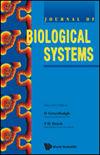接种疫苗和卫生条件下动物群体炭疽传播模型的全局动力学、最优控制和成本效益分析
IF 1.5
4区 数学
Q3 BIOLOGY
引用次数: 1
摘要
在这项研究中,我们提出了一个描述炭疽在动物中传播动力学的确定性模型。模型中假设,当易感动物接触到受感染的动物、受感染的尸体或炭疽杆菌的孢子时,就会感染炭疽。导出了无病和地方病平衡的条件,并计算了基本繁殖数([公式:见正文])。当[公式:见正文]并且疾病将被消除时,无病平衡是稳定的。如果[公式:见正文],疾病持续存在,因此,地方病均衡是全球稳定的。此外,我们通过应用最优控制问题来扩展我们的模型,在最优控制问题中,易感动物的疫苗接种和卫生条件是控制变量,以最大限度地减少炭疽病的传播。我们研究了三种策略来调查控制的影响。我们的数值结果表明,疫苗接种和卫生设施都有助于最大限度地减少传播,尽管单独接种疫苗比单独卫生设施产生的影响更大。然而,两种控制措施的结合在彻底消除炭疽传播方面取得了最好的效果。此外,成本效益分析表明,控制炭疽病的最有效策略是将疫苗接种和感染地区的卫生相结合,因此应鼓励这两种干预措施。本文章由计算机程序翻译,如有差异,请以英文原文为准。
GLOBAL DYNAMICS, OPTIMAL CONTROL AND COST-EFFECTIVENESS ANALYSIS FOR ANTHRAX TRANSMISSION MODEL IN ANIMAL POPULATIONS WITH VACCINATION AND SANITATION
In this study, we propose a deterministic model describing the dynamics of anthrax transmission in animals. It is assumed in the model that anthrax is contracted when susceptible animal comes into contact with infected animals, infected carcasses or the spores of Bacillus anthracis. Conditions for disease-free and endemic equilibria are derived and the basic reproduction number ([Formula: see text]) is computed. The disease-free equilibrium is stable when [Formula: see text] and the disease will be eliminated. If [Formula: see text], the disease persists, therefore, the endemic equilibrium is globally stable. Further, we extend our model by applying optimal control problem in which vaccination for susceptible animals and sanitation are control variables to minimize the anthrax transmission. We study three strategies to investigate the impact of the controls. Our numerical results demonstrate that both vaccination and sanitation help minimizing the transmission although vaccination alone gives more significant impact than sanitation alone. However, the combination of both controls gives the best result in wiping out the anthrax transmission overall. Further, cost-effectiveness analysis shows that the most effective strategy to control anthrax disease is a combination of vaccination and sanitation of the infected areas, therefore these two interventions should be encouraged.
求助全文
通过发布文献求助,成功后即可免费获取论文全文。
去求助
来源期刊
CiteScore
2.80
自引率
12.50%
发文量
31
审稿时长
1 months
期刊介绍:
The Journal of Biological Systems is published quarterly. The goal of the Journal is to promote interdisciplinary approaches in Biology and in Medicine, and the study of biological situations with a variety of tools, including mathematical and general systems methods. The Journal solicits original research papers and survey articles in areas that include (but are not limited to):
Complex systems studies; isomorphies; nonlinear dynamics; entropy; mathematical tools and systems theories with applications in Biology and Medicine.
Interdisciplinary approaches in Biology and Medicine; transfer of methods from one discipline to another; integration of biological levels, from atomic to molecular, macromolecular, cellular, and organic levels; animal biology; plant biology.
Environmental studies; relationships between individuals, populations, communities and ecosystems; bioeconomics, management of renewable resources; hierarchy theory; integration of spatial and time scales.
Evolutionary biology; co-evolutions; genetics and evolution; branching processes and phyllotaxis.
Medical systems; physiology; cardiac modeling; computer models in Medicine; cancer research; epidemiology.
Numerical simulations and computations; numerical study and analysis of biological data.
Epistemology; history of science.
The journal will also publish book reviews.

 求助内容:
求助内容: 应助结果提醒方式:
应助结果提醒方式:


